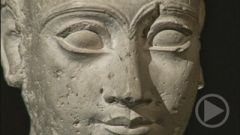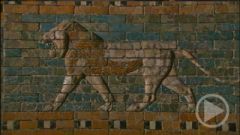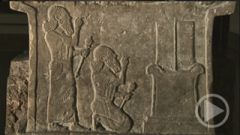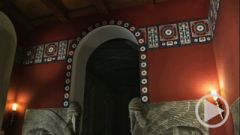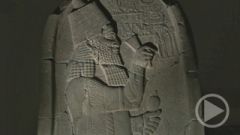- Home
- »
- Germany
- »
- Berlin
- »
- Museum Island
- »
- Pergamon Museum
- »
- The Museum of the Ancient Near East
- »
- The Pergamon Museum - Babylon
Babylon
Babylon
Few names unleash such a flood of associations. It was the most powerful city in the ancient world, a symbol for greatness and splendour, and for excess and decline. One thousand years after its founding, Babylon was in full flower. King Nebuchadnezzar the second ascended the throne in 605 B.C. For 43 years, he ruled an enormous empire stretching from the Tigris to Lower Egypt. Even today, the ruins of his great city cover 850 hectares - the largest field of ruins in all of Mesopotamia.
Nebuchadnezzar used grand architectural projects to show off his power. He had Babylon surrounded by a double ring of walls. The outer ring was 3.5 metres thick, the inner a full 6.5 metres. Even in ancient times, they were counted among the Seven Wonders of the World. The walls were made largely of simple clay bricks, but not the gigantic Ishtar Gate and the broad avenue that led to it. For these were the site of the highlight of the Babylonian calendar: the New Year's Procession.
For eleven days, the images of the gods dwelled in the New Year's house outside the city gates. Now the priests carry them, on richly decorated thrones, in a festive procession back to the temple. The street is lined with rejoicing crowds, music washes over the gleaming blue walls. The size of the walls alone is enough to overwhelm most of the populace, who live in lowly mud huts. In addition, the frightening lions that face off against the procession are there to remind them of the greatness of the goddess Ishtar, ruler of war and love.
At the Ishtar Gate, the procession is received by the animals symbolising the other main gods: the bull, as fertile and as powerful as Adad the weather god. There is the terrible dragon Mushhushu, with the head of a snake, the paws of a lion, the claws of an eagle and the lethal stinger of a scorpion - the symbols of speed and strength, wisdom, and power over life and death. This is Marduk, the greatest of all the Babylonian gods.
If you look at the painting in the Babylonian hall, you can clearly see that the Ishtar Gate and the Processional Way were built in several layers. The oldest parts of the walls are covered in reliefs of unglazed bricks. They were later filled in and the Babylonians built new walls on top. This time they covered the walls with coloured glazing and painted mythical animals on the tiles. This layer was also later covered. In the last step, the Babylonians combined the two techniques. On Nebuchadnezzar's magnificent buildings, you can see the symbols of the gods as colour-glazed reliefs.
The procession has moved through the massive Ishtar Gate - the path through the four arches is 48 metres long! Now it approaches the temple area. In the middle of it is the highest structure in the world - a mighty tower, with the great Marduk's house on top. The Tower of Babel!
The ziggurat at Babylon was the largest of all the temple towers. Cuneiform tablets call it "Etemenanki", the "house of the foundation of heaven and earth". When the archaeologists arrived in Babylon in 1899, there was at first no sign of the famous tower. Only ditches marked the site where the walls once stood. The scientists had to wait for two particularly dry summers before they could study the foundations of the outer walls.
Like most European artists, Pieter Brueghel had the wrong information when he painted his famous "tower of Babel" in 1563. The tower was not round, but square. It was, however, as massive as legend said. The foundation was 91 metres by 91 metres and the tower is also believed to have been 91 metres tall. The outer walls were made of fired brick, while the massive core was of unfired clay.
The Babylonians would have worked for decades to build it. In the Bible, the Tower of Babel is the symbol for human hubris. God destroys it to deter humankind from its overestimation of itself:
"Go to, let us go down, and there confound their language, that they may not understand one another's speech."
And in fact, the metropolis must have been a true language babble. Envoys and traders from all over the world met here - and then there were the countless prisoners from the empire's various subject peoples.
Nebuchadnezzar used his building projects to glorify not only the gods, but also himself. He had his throne room decorated on the exterior with coloured tiles. A partial reconstruction of that magnificent facade is next to the Ishtar Gate. It was once 56 metres long, decorated with marvellous ornamental palm trunks, each crowned with a stylised volute. And once again, Ishtar's lions put the literal fear of god into visitors - a frightening demonstration of the king's power.
One of Nebuchadnezzar's successors was King Belshazzar, and it's possible that the biblical story of the "writing on the wall" actually took place within these walls.


